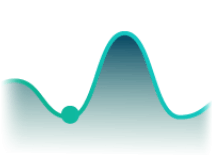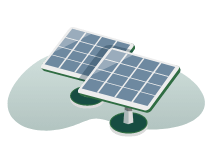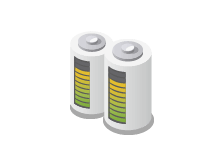The energy storage system can provide guarantee to the stability of a corporate power system.The generation of renewable energy is intermittent and unstable, while the capacity generated is difficult to predict. There are also concerns about reactive power compensation and capacity issue. As the ratio of these new distributed power generation systems increases, the stability of the grid will be substantially affected. In addition to being used as backup power, energy storage systems are playing a very important role in grid stabilization and renewable energy application improvement. Through professional energy storage system design and planning, information and communication technology, power management system and power quality control technology, e-Formula helps enterprises stabilize power consumption or renewable energy output, achieving benefits such as peak shaving, electricity inhibition, and timed electricity prices. In addition, by participating in Taipower's auxiliary service trading platform, enterprises can also revitalize their energy storage assets.

Use the energy storage systems to support peak shaving and, avoid penalty charges for exceeding electricity limit, identify the best capacity contract, and reduce electricity charges

Charge the energy storage system during off-peak hours, and use the power stored in system during peak hours

Saving solar power for consumption at night or when there is a lack of sunlight

Charge the energy storage system during off-peak hours, provide emergency power backup during power outages, thereby enhancing operational resilience
Site space, topography, distance from adjacent buildings, Taipower parallel contact, location of pipe ditch, construction difficulty, etc.
Application, energy capacity, discharge time, environmental conditions, protection coordination, monitoring system, safety, special customer requirements, etc.
Project timeline management, on-site management, component transportation, hoisting, work safety, Taipower reviews, etc.
Acceptance test items, factory test site, factory test time, factory test report, installation schedule, energy transmission, system turn-up test, etc.
Acceptance test items, acceptance test time, acceptance report, training documents, training time, locations, etc.
After service, spare parts, O&M method, agency trade, etc.